Pluto’s name (derived from the Roman god of the underworld) is ironic, considering that its status as a full-fledged planet died in 2006. The International Astronomical Union (IAU) voted to change its status to that of a dwarf planet on the basis that it had not “cleared the neighborhood around its orbit,” which is the 3rd planetary requirement. Despite this demotion, it remains an icon of space exploration. So how far away is Pluto from Earth, the Sun, and other planets? Find out below!
How Far Away Is Pluto?
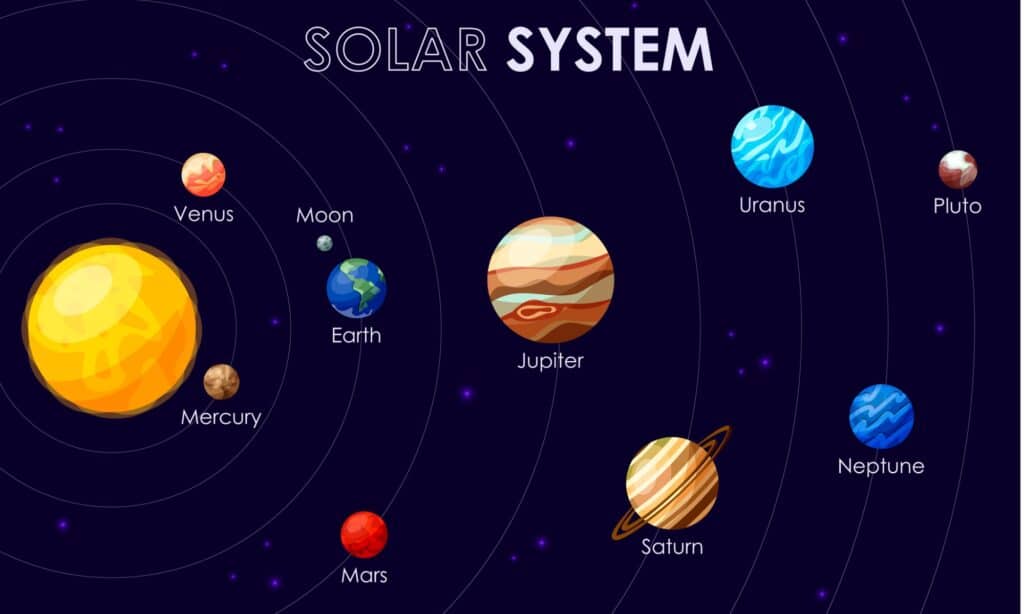
Pluto is a dwarf planet, demoted from its full planet status in 2006.
©iStock.com/Alexander Timoshin
Pluto lies an average of 3.58 billion miles from Earth and 3.7 billion miles from the Sun. When scientists still considered it a major planet, it lay ninth in line from the Sun behind Neptune. Like all planets, it has an elliptical orbit around our star.
Astronomers also measure distance in light years and astronomical units. A light year is the distance light travels in one Earth year. An astronomical unit (AU) equals 93 million miles, the distance between Earth and the Sun.
Distance From Pluto to the Sun: 3.7 Billion Miles
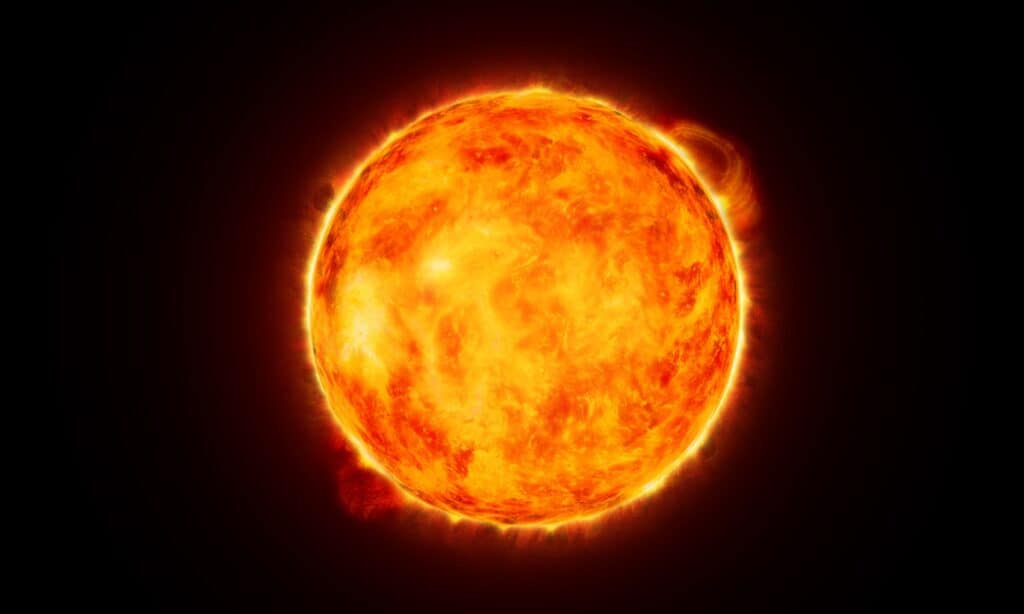
The average distance from Pluto to the Sun is 3.7 billion miles.
©iStock.com/hadzi3
The average distance from Pluto to the Sun is 3.7 billion miles or 39 AU. At its closest (perihelion), it is 2.76 billion miles from the Sun; at its furthest (aphelion), it is 4.58 billion miles away. Expressed in different terms, it’s approximately 0.000456308 light years from our star.
It’s also smaller than any major planet in our solar system, smaller even than the Moon! With a diameter of only 1,473 miles, this dwarf planet could fit into the Sun 200 million times over. Because it’s so far away, sunlight is much fainter on its surface than on Earth, about 1/900th of what humans experience.
Distance From Pluto to Earth: 3.58 Billion Miles
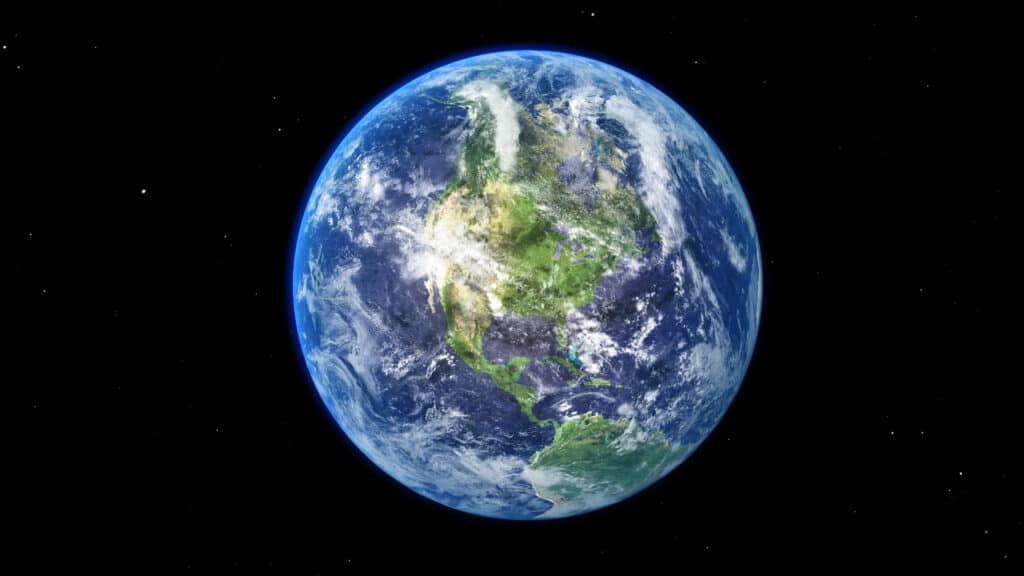
The average distance from Pluto to Earth is 3.58 billion miles.
©iStock.com/Thaweesak Saengngoen
The average distance from Pluto to Earth is 3.58 billion miles or 38.5 AU. At its furthest away, the dwarf planet is 4.67 billion miles from Earth, while at its closest, it is 2.66 billion miles away. With only half the width of the United States, it could fit inside Earth 154 times. It also has the largest moon in the solar system relative to its own mass, Charon. Only four other moons join Charon in its orbit.
Distance From Pluto to Mercury: 3.64 Billion Miles

The average distance from Pluto to Mercury is 3.64 billion miles.
©iStock.com/FlashMyPixel
The average distance from Pluto to Mercury is 3.64 billion miles or 39 AU. Since the dwarf planet’s demotion, Mercury has claimed the title of the smallest planet in the solar system. It’s twice as large and much closer to the Sun, occupying the nearest position to our star. For this reason, it is also much hotter, with temperatures up to 800°F (430°C) in contrast to Pluto’s average temperature of -387°F (-233°C).
Distance From Pluto to Venus: 3.61 Billion Miles
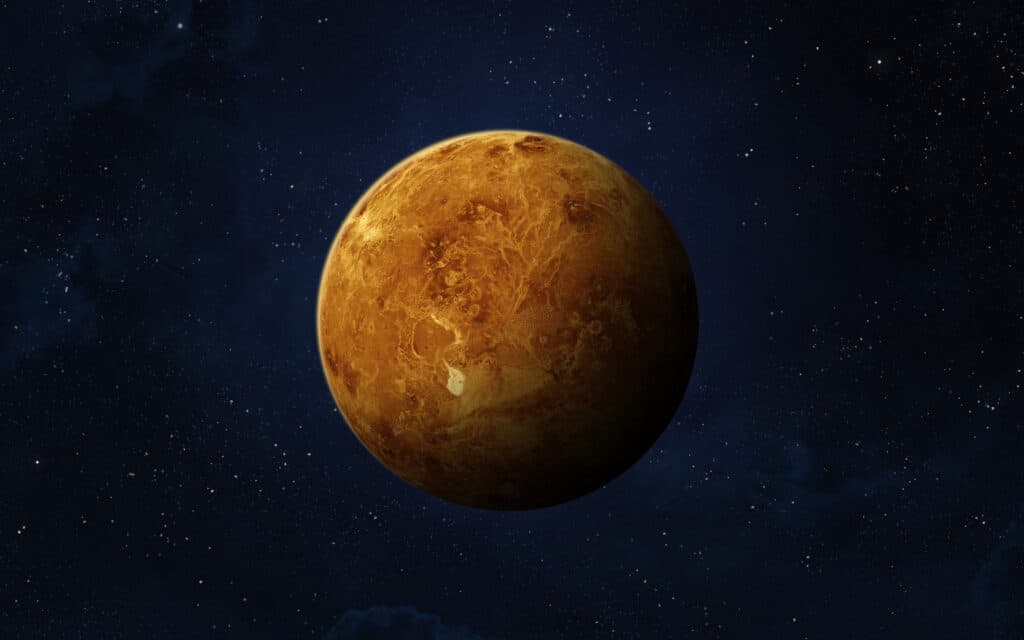
The average distance from Pluto to Venus is 3.61 billion miles.
©iStock.com/buradaki
The average distance from Pluto to Venus is 3.61 billion miles or 38.8 AU. Venus is even hotter than Mercury, with temperatures climbing up to 872°F (467°C). While Pluto is icy, volcanoes and lava cover Venus’s surface. Scientists speculate that there might be an ocean deep inside the dwarf planet where temperatures are warmer, though they haven’t confirmed this theory. If an ocean did exist, so might the possibility of life.
Distance From Pluto to Mars: 3.53 Billion Miles
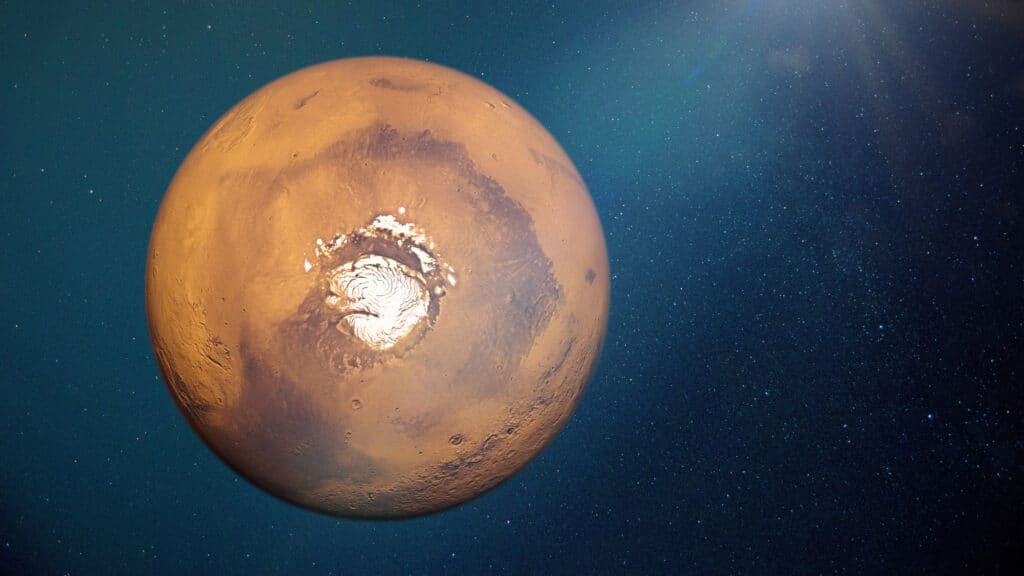
The average distance from Pluto to Mars is 3.53 billion miles.
©iStock.com/dottedhippo
The average distance from Pluto to Mars is 3.53 billion miles or 38 AU. Both planets have thin atmospheres, though the Plutonian atmosphere is mostly nitrogen, methane, and carbon dioxide. Mars’ atmosphere, on the other hand, is mainly composed of carbon dioxide. Both planets appear reddish: Mars from the iron compounds in its soil, the dwarf planet from unknown causes.
Distance From Pluto to Jupiter: 3.19 Billion Miles
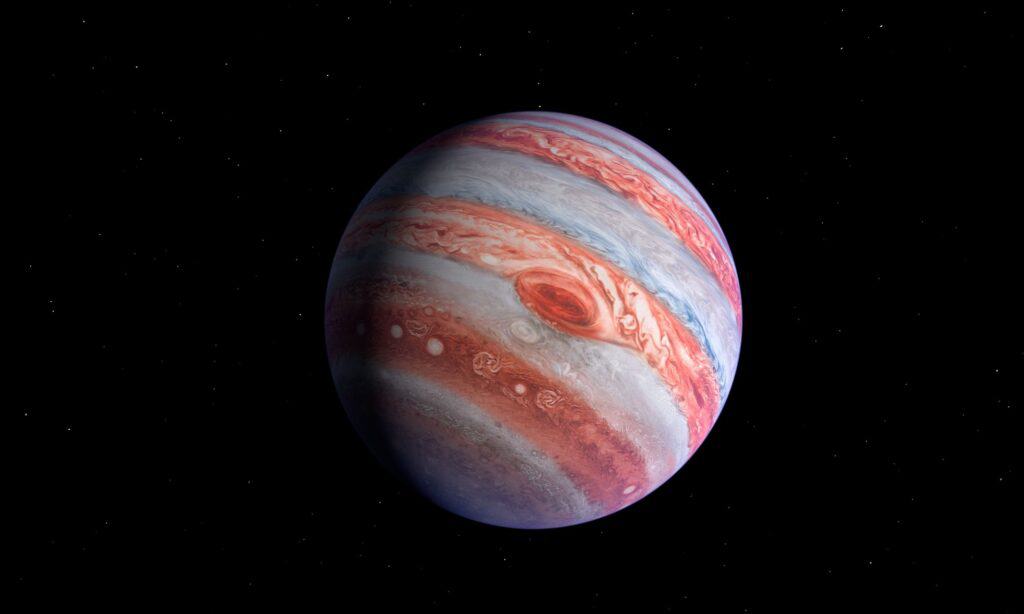
The average distance from Pluto to Jupiter is 3.19 billion miles.
©joshimerbin/Shutterstock.com
The average distance from Pluto to Jupiter is 3.19 billion miles or 34.33 AU. While the dwarf planet is terrestrial, Jupiter is the first of the gas giants and therefore does not have a solid surface. Jupiter is also the largest planet in our solar system. Pluto could fit inside Jupiter almost 200,000 times over. In fact, every planet in the solar system could fit inside Jupiter at once and still have room to spare!
Distance From Pluto to Saturn: 2.79 Billion Miles

The average distance from Pluto to Saturn is 2.79 billion miles.
©iStock.com/Elen11
The average distance from Pluto to Saturn is 2.79 billion miles or 29.97 AU. Unlike Saturn, whose 7 rings are the most prominent and complex in the solar system, Pluto has no rings. It is also outdone by Saturn’s many moons, which number 53 (not counting the 29 moons scientists have yet to confirm and name). Saturn is the second of the gas giants and the second largest planet in the solar system, trailing behind Jupiter.
Distance From Pluto to Uranus: 1.89 Billion Miles

The average distance from Pluto to Uranus is 1.89 billion miles.
©iStock.com/IncrediVFX
The average distance from Pluto to Uranus is 1.89 billion miles or 20.34 AU. Uranus is generally considered the coldest planet in the solar system, with temperatures as low as -371°F (-224°C). It can’t quite outmatch Plutonian temperatures, however. Nor can it outdo the dwarf planet’s year, which lasts 248 Earth years. By contrast, Uranus’ year only lasts 84 Earth years. Even Neptune’s 165-year-long orbit around the Sun, the longest of the major planets, doesn’t compare.
Distance From Pluto to Neptune: 875.6 Million Miles

The average distance from Pluto to Neptune is 875.6 million miles.
©iStock.com/3quarks
The average distance from Pluto to Neptune is 875.6 million miles or 9.42 AU. The dwarf planet occasionally crosses over into Neptune’s orbit to pass closer than Neptune to the Sun. Neptune’s winds are legendary, the strongest of all the planets at 1,200 miles per hour or almost 2,000 kilometers per hour. Plutonian winds, on the other hand, are quite tame, averaging only about 23 miles per hour or 37 kilometers per hour.
How Long Does It Take to Travel From Pluto to Earth?
It took about 9.5 years for NASA’s New Horizons spacecraft to travel to Pluto from Earth, though other spacecraft like NASA’s Voyager 1 and 2 took as long as 12.5 years. New Horizons launched on January 19, 2006, and arrived at Pluto on July 14, 2015. It shortened its travel time by using a gravity assist from Jupiter.
Is Pluto Visible From Earth?
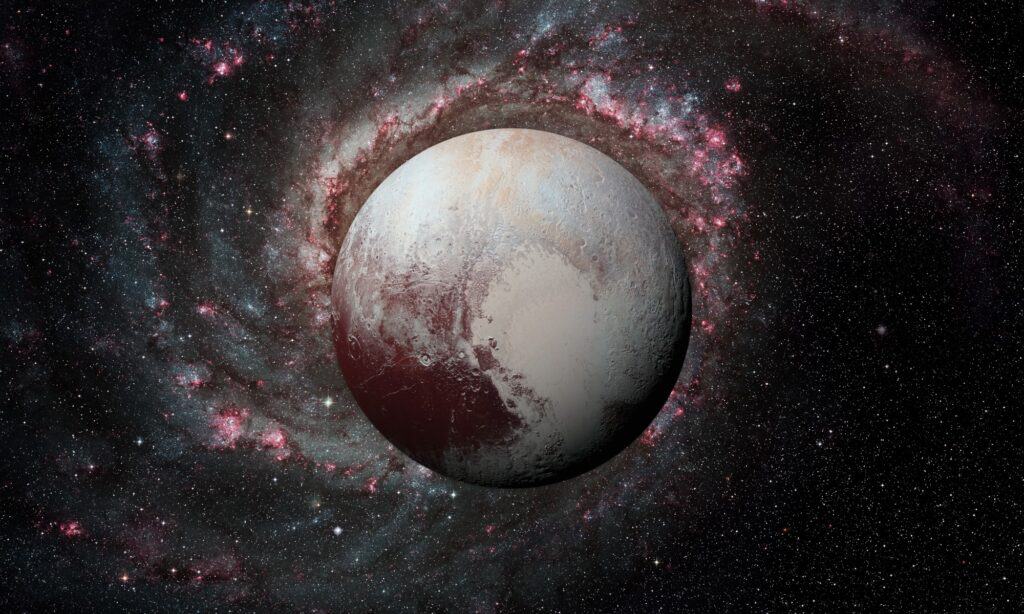
Pluto is visible from Earth, but not to the naked eye.
©NASA images/Shutterstock.com
Pluto is visible from Earth, but not to the naked eye. Would-be observers must use a large telescope to catch a glimpse of this chilly dwarf planet. Check out this guide to find out what you’ll need and other fascinating facts.
Has Anyone Ever Set Foot On Pluto?
No human or spacecraft has ever landed on Pluto. Though NASA’s Voyager 1 and 2 flew beyond it, they didn’t pass close by. NASA’s New Horizons spacecraft came closer to the dwarf planet than any other spacecraft, taking groundbreaking pictures and collecting data to send back to scientists on Earth. The extreme Plutonian temperatures and other conditions would make a hypothetical landing difficult.
Plutonian Climate and Lifeforms
The Plutonian climate is forbidding, with bone-chilling cold and an unbreathable atmosphere. Scientists have not been able to detect any lifeforms on the planet, either plant or animal. Nor are any likely without a water source. Though underground oceans are possible, scientists have yet to confirm their existence.
Whatever you think of Pluto’s status as a planet, no one can deny that it’s a fascinating and mysterious member of our solar system!
Check out this article on “How Much You’d Weigh On Pluto.”
The photo featured at the top of this post is © NASA images/Shutterstock.com
Thank you for reading! Have some feedback for us? Contact the AZ Animals editorial team.







